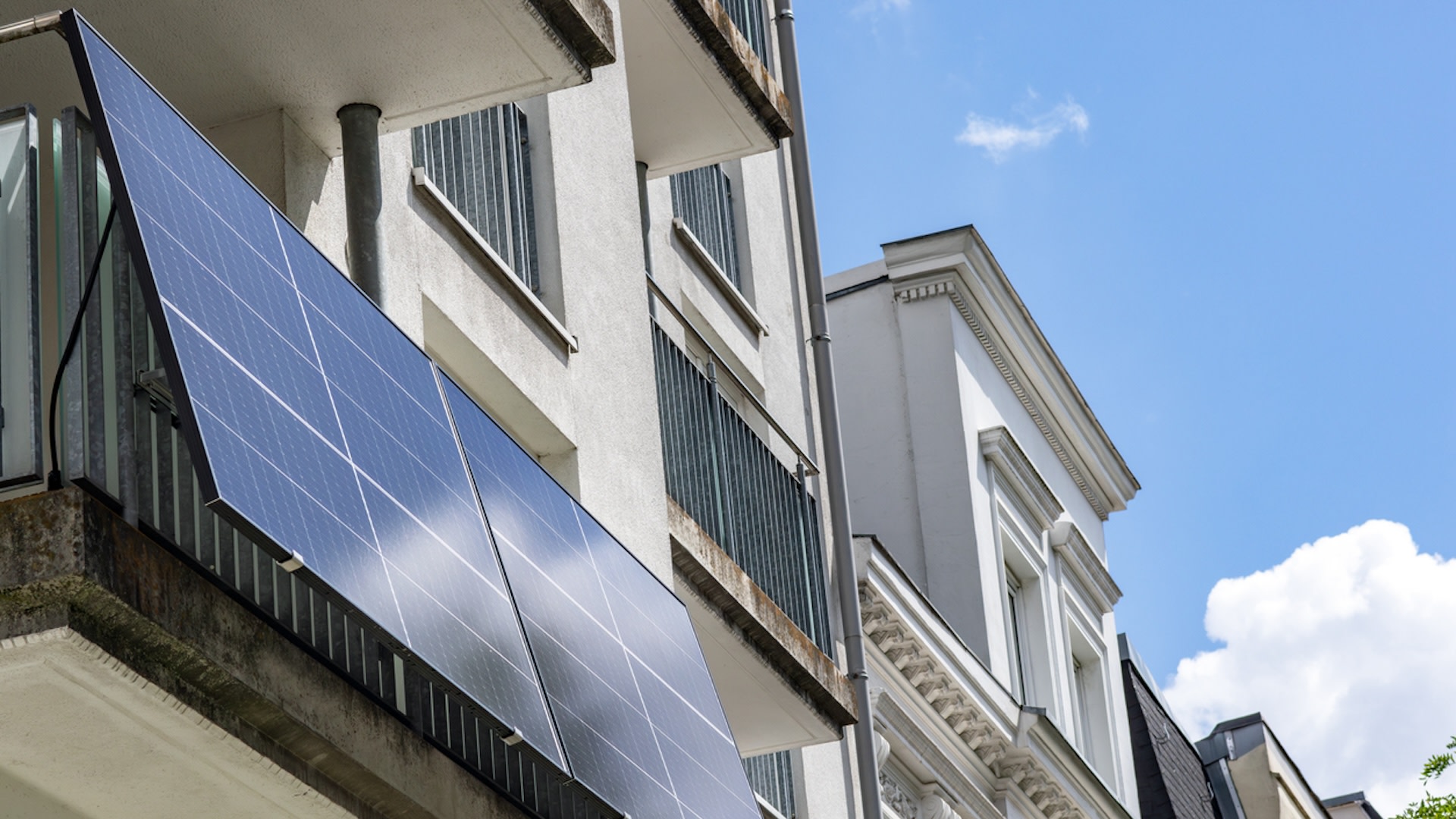In terms of capacity, Florida is one of the largest solar energy markets in the U.S., but it falls short on energy efficiency measures that could help the Sunshine State make better use of its natural solar resources, according to analyses from the American Council for an Energy-Efficient Economy (ACEEE) and other industry groups.
Still, solar energy is expanding in the state, with about 45% more solar panel generation systems installed in 2022, compared to 2021, according to Florida’s Public Services Commission (PSC). In Central Florida, utilities and nonprofit groups are working on different strategies to reduce fossil fuel emissions and improve energy efficiency.
Support for those switching to solar
For a long time, the idea of solar energy intrigued Orange County homeowner Chris Pratt, but he says he never felt confident about making the switch until earlier this year, when he joined what’s called a ‘solar co-op,’ through Solar United Neighbors (SUN). This may interest you : Intersect’s 679MW US solar-storage project begins operations.
“I was intimidated by the process of reaching out to and receiving bids from numerous different [solar panel] installation companies, and wondered if I could ever get to a place where I was confident that I had picked the best choice,” Pratt said.
But SUN resolved those anxieties, Pratt says, by guiding him through the process, especially once it came time for his solar co-op to choose a contractor to install rooftop panels.
“Not only were we looking at who’s got the best price, but we were able to figure out who’s actually a reliable, solid company,” Pratt said.
Although SUN calls its projects ‘solar co-ops,’ Florida Program Director Heaven Campbell says they aren’t true co-ops, because members don’t all pool their money together to buy a palette of solar panels. Instead, each group member signs their own, independent contract with the selected solar company.
But SUN does help group members organize and leverage their purchasing power, Campbell said. For each solar co-op, SUN requests work proposals and reviews all the different solar contractors that respond: thoroughly vetting each one, and eliminating any bids that don’t meet the nonprofit’s standards.
Almost every time, for each co-op, SUN staff disqualify one to three bids that fall short in some way: sometimes because the contractor is unlicensed, or doesn’t have insurance. The goal is to protect and educate potential solar consumers, Campbell said.
“Contracting work can be the wild, wild west, and we want to make sure people are doing this in the safest way possible,” Campbell said.
As he looked over the solar panels to be installed on his roof one November afternoon, Orange County homeowner Chris Pratt reflected on his longtime interest in solar energy: “With the co-op, it seems like it resolved so many of those anxieties that I had regarding going solar,” he said.
Scrutiny of solar contractors is growing along with the industry’s rise in Florida. As of early December, Attorney General Ashley Moody filed civil complaints against three different solar installers in two months, for allegedly deceptive business practices: from misleading customers and damaging property, to operating without a proper license or permit.
But Campbell says SUN can act as a trusted intermediary between contractor and consumer, adding a layer of consumer protection for Floridians interested in exploring whether solar energy might be right for them. And if it’s not? There’s no pressure to make the switch, Campbell said.
“Even if you don’t go solar, you should be better at hiring a contractor and have a more critical eye for how to improve your greatest asset, which is your home,” Campbell said.
SUN’s co-op in Orange County is currently closed to new members, but reopens annually; those interested can sign up for a wait-list and receive alerts when spots open up. In Brevard County, SUN’s Space Coast Solar Co-op remains open to new members as of late December.
Solar specifics
For Pratt, solar energy was compelling for two reasons. To see also : Skilled trades workers and apprentices bolster Iowa’s clean energy boom. Certainly, he was interested in helping the environment, he says, but another motivation was financial.
“In the 18 years that I’ve lived in Orlando, I’ve seen my electric bill go up substantially. And not just because of my family growing and consumption increasing, but the rate per kilowatt hour has gone up tremendously,” Pratt said one November afternoon, as contractors installed solar panels on his roof.
Now, Pratt’s looking forward to what he anticipates will be major savings on his electric bill, which he says would sometimes climb as high as $500 a month.
But Pratt’s home will still be connected to the electric grid, and won’t be fully powered by solar energy. Instead, Pratt estimates the panels will cover about 80% of his family’s energy needs.
Courtesy Mike Chmela / 15 Lightyears
Darius Lauture (left) and Jordany Diaz with 15 Lightyears install solar panels onto the roof of Pratt’s home in November 2023.
“We weren’t in a position to have batteries, which would be necessary to power our house at night when there’s no sun shining,” Pratt said.
That’s a point that often confuses potential solar energy customers, according to Lisa Pearcy, founder and CEO of 15 Lightyears, the solar installer chosen by Pratt’s co-op.
“Nothing is free … A lot of times, people will think they don’t have to pay a bill. But there are fees associated with being interconnected, and there’s no way around it,” Pearcy said. “You’re interconnected, in Florida, to the grid; Central Florida especially.”
Overall, there’s a lack of education in the solar energy space, Pearcy says, which is why it’s crucial for any homeowners considering solar to first understand the nuances of how it would work — and how much it might cost — in their specific situation.
In addition to Solar United Neighbors, Pearcy says municipalities, utility companies and community organizations like rotary clubs can all be excellent resources for residents interested in exploring whether and how solar energy might work for them.
“I like being very transparent with people, so they fully understand the decision,” Pearcy said. “It’s a huge cost, and it’s a huge commitment. And it’s a great commitment, and totally worth it. But understanding everything that’s involved in it is really important.”
Road mapping a renewable future
On a large scale, solar battery technology could help smooth out power fluctuations and provide a more reliable energy supply to the grid, according to Orlando Utilities Commission (OUC) Emerging Technologies Manager Justin Kramer.
Right now, Kramer and his team are testing a new battery energy storage system, or BESS, that can be programmed to monitor and respond in real time to weather changes impacting the grid. Once applied at scale, the BESS would help reduce power surges and outages for customers, Kramer said.
“Anybody who’s connected to the grid would benefit from this particular battery,” Kramer said.
Courtesy Orlando Utilities Commission (OUC)
Workers install OUC’s new battery energy storage system, or BESS, at a substation in Osceola County in October 2023. The BESS is a pilot project to help OUC maximize solar power and enhance overall grid resiliency, according to the utility.
The BESS at OUC’s St. Cloud Substation in Osceola County is just one of the municipal utility’s many different solar energy endeavors, which also include seven solar farms and various floating solar panel arrays that attach to rafts atop reflective bodies of water, maximizing panel capacity. OUC’s goal is to reach net zero carbon emissions by the year 2050, and halve current emissions by 2030.
Kramer describes the BESS as OUC’s “flagship battery technology evaluation pilot,” allowing his team to answer important questions and gather information about how to best use the technology at a larger scale.
“OUC’s made some really aggressive goals in sustainability, and we need a lot of technologies to help support that,” Kramer said. “This is an opportunity for my team to learn what technologies we need, how much we need, what’s it going to cost, and kind of build that road map for our future.”



